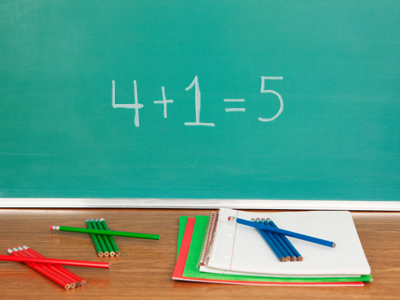
Ask the AI Tutor
Need help with Year 2 Calculation - Inverse Operations? Ask our AI Tutor!
AI Tutor - Lucy
Connecting with Tutor...
Please wait while we establish connection

To check if 4 + 1 = 5 you could try seeing if 5 - 1 = 4 or 5 - 4 = 1.
Year 2 Calculation - Inverse Operations
Use inverse operations to check answers. Switch between addition and subtraction to spot mistakes and build confident mental methods.
Question 1
Use number pairs, or bonds, to 20 to find the incorrect calculation:
20 - 13 = 7
20 - 8 = 12
20 - 16 = 14
20 - 2 = 18
16 + 14 gives a total of 30, not 20
Question 2
Which calculation could you use to check that 16 - 9 = 7 is correct?
16 + 9 = 7
9 + 7 = 16
7 - 16 = 9
7 - 9 = 16
If 9 subtracted from 16 leaves 7, then by adding the 9 back again, you should be back to where you started
Question 3
How do you know that 20 - 10 = 10?
Because I know 10 + 10 = 20
Because it's a subtraction
Because it's an addition
Because I know about subtraction
Using an addition fact can help to solve a subtraction
Question 4
How could you check 62 + 38 = 100?
By taking away 100
By finding the difference between 62 and 38
By subtracting 100 from 62
By subtracting 38 from 100
If 62 + 38 = 100 is correct, then 100 - 38 should give an answer of 62
Question 5
Use number pairs, or bonds, to 20 to find the incorrect calculation:
20 - 10 = 20
20 - 0 = 20
20 - 15 = 5
20 - 19 = 1
20 + 10 would not give a total of 20
Question 6
Which calculation could you use to check that 15 + 8 = 23 is correct?
23 + 8 = 15
23 + 15 = 8
15 - 8 = 23
23 - 8 = 15
If a group of 15 and a group of 8 are combined, taking one group away again should leave you with the other
Question 7
If 29 - 15 = 14, what could you do to check the answer?
Subtract the numbers in a different order
Add 15 and 14 together
Take out any harder numbers
Put 14 at the beginning of the calculation
You can use addition to check a subtraction
Question 8
What does 'inverse operation' mean?
Doing the calculation upside down
Making a mistake on purpose
The opposite operation
A medical procedure
The inverse of subtraction is addition, the inverse of addition is subtraction
Question 9
How would you check 45 - 23 = 22?
By subtracting 22 from 23
By adding 45 and 22
By finding the total of all the numbers
By adding 23 and 22
Adding the two smaller numbers should give the larger number
Question 10
If 3 + 4 + 10 + 3 = 20, what could you do to check the answer?
Take out all the larger numbers
Use multiplication
Add some extra numbers in too
Add the numbers up again in a different order:
10 + 3 + 3 + 4 or 10 + 4 + 3 + 3
10 + 3 + 3 + 4 or 10 + 4 + 3 + 3
Addition can be done in any order
**Unlimited Quizzes Await You! 🚀**
Hey there, quiz champ! 🌟 You've already tackled today's free questions.
Ready for more?
Ready for more?
🔓 Unlock UNLIMITED Quizzes and challenge yourself every day. But that's
not all...
not all...
🔥 As a Subscriber you can join our thrilling "Daily Streak" against other
quizzers. Try to win a coveted spot on our Hall of Fame Page.
quizzers. Try to win a coveted spot on our Hall of Fame Page.
Don't miss out! Join us now and keep the fun rolling. 🎉
**Unlimited Quizzes Await You! 🚀**
Hey there, quiz champ! 🌟 You've already tackled today's free questions. Ready for more?
🔓 Unlock UNLIMITED Quizzes and challenge yourself every day. But that's not all...
🔥 As a Subscriber you can join our thrilling "Daily Streak" against other quizzers. Try to win a coveted spot on our Hall of Fame Page.
Don't miss out! Join us now and keep the fun rolling. 🎉






